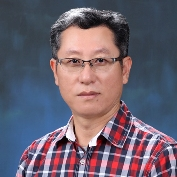Biomass Pretreatment and Biomass Conversion to Biofuels
A special issue of Energies (ISSN 1996-1073). This special issue belongs to the section "A: Sustainable Energy".
Deadline for manuscript submissions: closed (31 July 2019) | Viewed by 20439
Special Issue Editors
Interests: bioenergy; pretreatment; fermentation; anaerobic digestion; co-digestion; microalgal biofuels
Interests: microagal biotechnology; nutrient removal; wastewater treatment; anaerobic digestion; bioremediation; bioenergy; biofuels
Special Issue Information
Dear Colleagues,
Biomass-derived fuels have been attracting increasing attention during recent years because of the abundance of renewable and sustainable resource supplies. Several kinds of biomasses, such as grasses, agricultural wastes, animal residues, and waste cooking oils, can be used as substrate for the production of biofuels. However, effective biomass pretreatment and conversion processes are of prime importance in order to minimize processing costs and maximize yields to successfully compete with existing conventional fuels. Advances in pretreatment technology are important to develop high-yielding, cost-effective methods for the generation of renewable fuels. The state-of-art catalytic biotechnologies for the conversion of biomass into different varieties of liquid fuels, such as ethanol, biodiesel, and butanol, and gaseous fuels, such as hydrogen and methane, need special attention.
This Special Issue will cover all aspects related to pretreatment technologies for the processing of biomass and further conversion of biomass to biofuels. Emphasis will be given to the new advancements in biological processes, such as fermentation and anaerobic digestion of biomass for achieving high yields of biofuels.
Topics of interest include, but are not limited to:
- Cost-effective biological and thermochemical pretreatments for the conversion of biomass;
- Factors influencing biomass conversion, such as the composition and structure of biomass;
- Biomass conversion to liquid fuels through fermentation;
- Advancements in anaerobic digestion of biomass for higher yield in gaseous fuels;
- Anaerobic co-digestion of biomass;
- Process inhibitors and challenges in biological conversion of biomass and the strategies to eliminate them;
- Economics of biomass conversion to fuels via biological processing.
Prof. Dr. Byong-Hun Jeon
Dr. El-Sayed Salama
Dr. Mayur B. Kurade
Guest Editors
Manuscript Submission Information
Manuscripts should be submitted online at www.mdpi.com by registering and logging in to this website. Once you are registered, click here to go to the submission form. Manuscripts can be submitted until the deadline. All submissions that pass pre-check are peer-reviewed. Accepted papers will be published continuously in the journal (as soon as accepted) and will be listed together on the special issue website. Research articles, review articles as well as short communications are invited. For planned papers, a title and short abstract (about 100 words) can be sent to the Editorial Office for announcement on this website.
Submitted manuscripts should not have been published previously, nor be under consideration for publication elsewhere (except conference proceedings papers). All manuscripts are thoroughly refereed through a single-blind peer-review process. A guide for authors and other relevant information for submission of manuscripts is available on the Instructions for Authors page. Energies is an international peer-reviewed open access semimonthly journal published by MDPI.
Please visit the Instructions for Authors page before submitting a manuscript. The Article Processing Charge (APC) for publication in this open access journal is 2600 CHF (Swiss Francs). Submitted papers should be well formatted and use good English. Authors may use MDPI's English editing service prior to publication or during author revisions.
Keywords
- Biomass pretreatment
- Biofuels
- Anaerobic digestion
- Fermentation
- Biological conversion of biomass to biofuels







